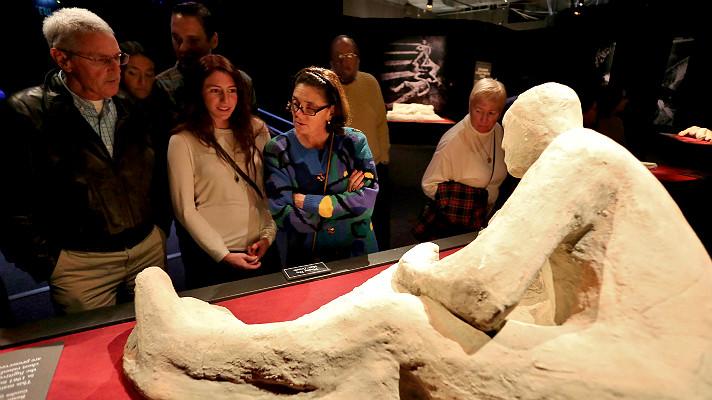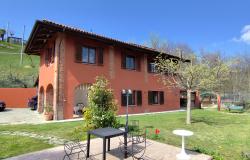Visitors to the California Science Center in Los Angeles can now get a glimpse of the lifestyle and tragic end of the ancient Roman society living in Pompeii before the city was destroyed by the eruption of Mount Vesuvius in 79 A.D.
“Pompeii: The Exhibition” features more than 150 artifacts on loan from the Naples National Archaeological Museum, including wall-sized frescoes, marble and bronze sculptures, jewelry, ancient Roman coins, gladiator armor, religious altars and shrines.
“This exhibition gives an extraordinary look at the city of Pompeii’s archeological treasures that rarely leave Italy,” said California Science Center President, Jeffrey Rudolph. “The insights and discoveries presented and made possible by the scientific tools of archeology and geology will allow guests to reach across time and gain a deeper understanding and human connection with this ancient culture and its people.”
Visitors can also relive the volcano’s catastrophic eruption through an immersive CGI experience, with floors shaking and walls rumbling, culminating in a gallery filled with 3-D replicas of full-body casts depicting men, women and children in their final moments, asphyxiated by heat and gases, and forever frozen in time.
“We really look at how science made possible discovering Pompeii, the excavation of the site, the conservation of objects and scientific interpretation of what their lives were like,” William T. Harris, senior vice president of the California Science Center Foundation, told the Los Angeles Daily News. “The lifestyle was actually quite sophisticated. Pompeii was like the Las Vegas of the Roman Empire,” he added. “People went there to have a good time, whereas Herculaneum was more of an upper-class enclave. It was where people went to vacation, and they had very beautiful homes with amazing artwork.”
The exhibition is on display until Jan. 4, 2015.
For more information about the exhibit, visit the California Science Center website.












